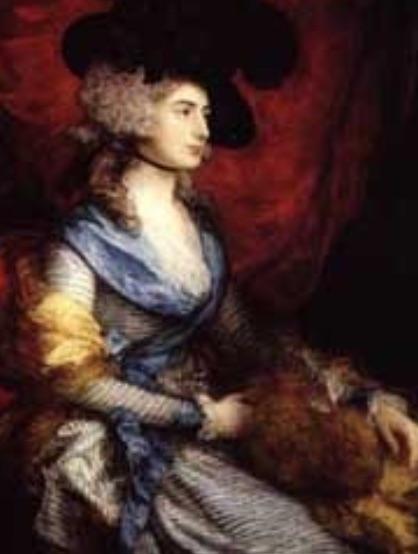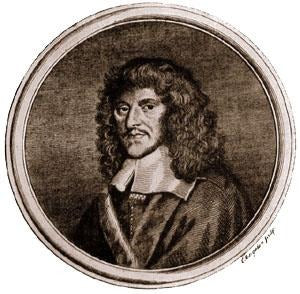Sir Walter Scott: Author & Critic
Who was Sir Walter Scott?
Also read again, and for the third time at least, Miss Austen's very finely written novel of Pride and Prejudice. That young lady had a talent for describing the involvement and feelings and characters of ordinary life which is to me the most wonderful I ever met with. The big Bow-wow strain I can do myself like any now going, but the exquisite touch which renders ordinary commonplace things and characters interesting from the truth of the description and the sentiment is denied to me. What a pity such a gifted creature died so early! Sir Walter Scott Journal entry, March 14th 1826
 Sir Walter Scott, Bart. (August 14, 1771 – September 21, 1832) was a prolific Scottish historical novelist and poet popular throughout Europe. In some ways he was the first author to have a truly international career in his lifetime, with many contemporary readers all over Great Britain, Ireland, Europe, Australia, and North America. He is sometimes known as the "Great Magician." His novels and poetry are still read, but with nothing like the popularity he once enjoyed. But many of his works remain in current lists of classical works in English literature. Famous titles include Ivanhoe, Rob Roy, Lady of the Lake and Talisman.
Sir Walter Scott, Bart. (August 14, 1771 – September 21, 1832) was a prolific Scottish historical novelist and poet popular throughout Europe. In some ways he was the first author to have a truly international career in his lifetime, with many contemporary readers all over Great Britain, Ireland, Europe, Australia, and North America. He is sometimes known as the "Great Magician." His novels and poetry are still read, but with nothing like the popularity he once enjoyed. But many of his works remain in current lists of classical works in English literature. Famous titles include Ivanhoe, Rob Roy, Lady of the Lake and Talisman.
Born in Edinburgh, Scotland in 1771, the son of a Scottish solicitor of limited means, the young Walter Scott survived a childhood bout of polio that would leave him lame in his right leg for the rest of his life. To restore his health he was sent to live for some years in the rural Scottish Borders district with his grandparents. Here he learned the speech patterns and many of the tales and legends which characterized much of his work. Also, for his health, he spent a year in Bath, England. He also learned by heart James Macpherson's Ossian poems, which it was claimed at the time were translations dating back to the Dark Ages, but later discredited when this was found to be untrue. After studying law at Edinburgh University, he followed in his father's footsteps and became a lawyer in his native Scotland.
In 1799 he was appointed sheriff depute of the county of Selkirk. After an unsuccessful love affair with Williamina Belsches of Fettercairn - she married Sir William Forbes - Scott married in 1797 Margaret Charlotte Charpentier (or Charpenter), daughter of Jean Charpentier of Lyon in France. They had five children. In his earlier married days, Scott had a decent living from the monies he earned at the law, his salary as deputy sheriff, his wife's income, some revenue from his writing, and his share of his father's rather meagre estate.
Beginning at age 25 he started dabbling in writing, first translating works from German then moving on to poetry. In between these two phases of his literary career, he published a three-volume set of collected Scottish ballads, The Minstrelsy of the Scottish Border. This was the first sign of his interest in Scotland and history from a literary standpoint.
After Scott had founded a printing press, his poetry, beginning with The Lay of the Last Minstrel in 1805, brought him fame. He published a number of other poems over the next ten years, including in 1810 the popular Lady of the Lake set in the Trossachs, portions of which (translated into German) were set to music by Franz Schubert. One of these songs, Ellens dritter Gesang, is popularly called "Schubert's Ave Maria". Another work from this time period, Marmion, produced some of his most quoted (and most often mis-attributed) lines. Canto VI. Stanza 17 reads:
Yet Clare's sharp questions must I shun,
Must separate Constance from the nun
Oh! what a tangled web we weave
When first we practise to deceive!
A Palmer too! No wonder why I felt rebuked beneath his eye;
When the press became embroiled in pecuniary difficulties, Scott set out, in 1814, to write a cash-cow. The result was Waverley, a novel which did not name its author. It was a tale of the last Jacobite rebellion in the United Kingdom, the "Forty-Five", and the novel met with considerable success.
There followed a large set of novels in next five years, each the same general vein. Mindful of his reputation as a poet, he maintained the anonymous habit he had begun with Waverley, always publishing the novels under the name "Author of Waverley" or attributed as "Tales of..." with no author. Even when it was clear that there would be no harm in coming out into the open he maintained the façade, apparently out of a sense of fun. During this time the nickname "The Wizard of the North" was popularly applied to the mysterious best-selling writer.
His identity as the author of the novels was widely rumoured, and in 1815 Scott was given the honour of dining with George, Prince Regent, who wanted to meet "the author of Waverley". Despite being a success himself, Scott also read extensively and published reviews of current literature. In 1816, he commended Emma in the the March issue of the Quarterly Review as being one of
"a class of fictions which has arisen almost in our own times, and which draws the characters and incidents introduced more immediately from the current of ordinary life than was permitted by the former rules of the novel", and "copying from nature as she really exists in the common walks of life, and presenting to the reader, instead of the splendid scenes of an imaginary world, a correct and striking representation of that which is daily taking place around him".
High praise, indeed. In 1820 he broke away from writing about Scotland with Ivanhoe, a historical romance set in 12th-century England. It too was a runaway success and, as he did with his first novel, he unleashed a slew of books along the same lines. As his fame grew during this phase of his career, he was granted the title of baronet, becoming Sir Walter Scott. At this time he organised the visit of King George IV to Scotland, and when the King visited Edinburgh in 1822 the spectacular pageantry Scott had concocted to portray George as a rather tubby reincarnation of Bonnie Prince Charlie made tartans and kilts fashionable and turned them into symbols of national identity.
Beginning in 1825 he went into dire financial straits again, as his company nearly collapsed. That he was the author of his novels became general knowledge at this time as well. Rather than declare bankruptcy he placed his home, Abbotsford House, and income into a trust belonging to his creditors, and proceeded to write his way out of debt. He kept up his prodigious output of fiction (as well as producing a non-fiction biography of Napoleon Bonaparte) until 1831. By then his health was failing, and he died at Abbotsford in 1832. Though not in the clear by then, his novels continued to sell, and he made good his debts from beyond the grave. He was buried in Dryburgh Abbey where nearby, fittingly, a large statue can be found of William Wallace—one of Scotland's most romantic historical figures.
 Scott was responsible for two major trends that carry on to this day. First, he popularized the historical novel; an enormous number of imitators (and imitators of imitators) would appear in the 19th century. It is a measure of Scott's influence that Edinburgh's central railway station, opened in 1854, is called Waverley Station.
Scott was responsible for two major trends that carry on to this day. First, he popularized the historical novel; an enormous number of imitators (and imitators of imitators) would appear in the 19th century. It is a measure of Scott's influence that Edinburgh's central railway station, opened in 1854, is called Waverley Station.
Second, his Scottish novels rehabilitated Highland culture after years in the shadows following the Jacobite rebellions. It is worth noting, however, that Scott was a Lowland Scot, and that his re-creations of the Highlands were more than a little fanciful. It is known that he invented many clan tartans out of whole cloth, so to speak, for the visit by George IV to Scotland in 1822. Nevertheless, even though he is less popular in these days, the echoes of Waverley and its sequels reverberate still. Scott was also responsible, through a series of pseudonymous letters published in the Edinburgh Weekly News in 1826, for retaining the right of Scottish banks to issue their own banknotes, which is reflected to this day by his continued appearance on the front of all notes issued by the Bank of Scotland. Many of his works were illustrated by his friend, William Allan.
If you don't want to miss a beat when it comes to Jane Austen, make sure you are signed up to the Jane Austen newsletter for exclusive updates and discounts from our Online Gift Shop.



Leave a comment
This site is protected by hCaptcha and the hCaptcha Privacy Policy and Terms of Service apply.